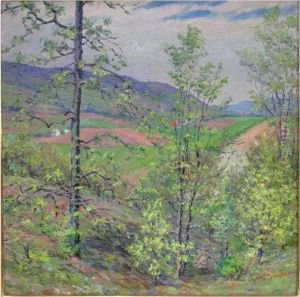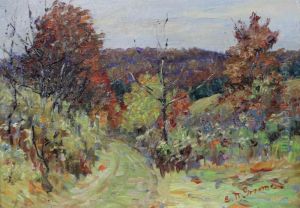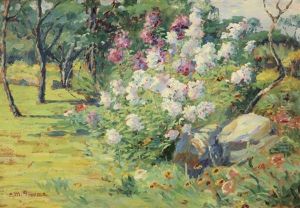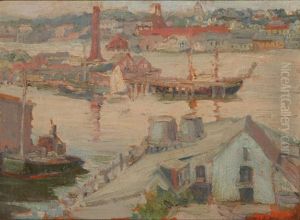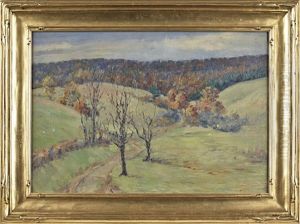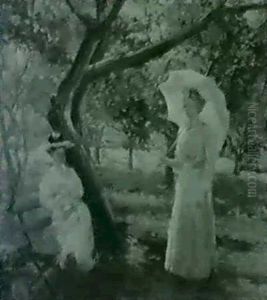Esther M. Groome Paintings
Esther M. Groome was an American artist born in 1866. Although not as widely recognized as some of her contemporaries, Groome made significant contributions to the American art scene of the late 19th and early 20th centuries. Her work, which spans various mediums including painting and illustration, reflects the broader movements of American realism and the emerging interest in capturing everyday life and landscapes with a new sense of authenticity and emotional depth.
Groome's artistic journey began in her early years, growing up in an environment that fostered her developing talents. She pursued formal art education at notable institutions, which was a significant achievement for women artists at the time, given the gender biases prevalent in the art world. Her education included studying under prominent artists of the period, which greatly influenced her style and approach to art-making.
Throughout her career, Esther M. Groome exhibited her work in various galleries and shows, earning accolades and recognition from her peers and critics alike. Her paintings often depicted serene landscapes, intimate domestic scenes, and portraits filled with character and sensitivity. Groome's ability to capture the subtleties of light and shadow, as well as her nuanced use of color, set her work apart.
Despite her talents and contributions, Groome's work was somewhat overshadowed by her male counterparts and the changing tides of artistic trends over the years. Today, however, there is a growing interest in rediscovering and reevaluating the contributions of women artists like Groome, who played vital roles in their artistic communities but did not always receive the recognition they deserved during their lifetimes.
Esther M. Groome passed away in 1929, leaving behind a legacy that has gradually gained appreciation in the art historical canon. Her works are now studied for their contributions to American art and for the unique perspective they offer on the era in which she lived and worked. Groome's life and art continue to inspire new generations of artists and art historians who seek to understand the depth and diversity of American artistic expression through the lens of those who were once overlooked.
